Izaskun Oregi
On the Transfer of Knowledge in Quantum Algorithms
Jan 23, 2025Abstract:The field of quantum computing is generating significant anticipation within the scientific and industrial communities due to its potential to revolutionize computing paradigms. Recognizing this potential, this paper explores the integration of transfer of knowledge techniques, traditionally used in classical artificial intelligence, into quantum computing. We present a comprehensive classification of the transfer models, focusing on Transfer Learning and Transfer Optimization. Additionally, we analyze relevant schemes in quantum computing that can benefit from knowledge sharing, and we delve into the potential synergies, supported by theoretical insights and initial experimental results. Our findings suggest that leveraging the transfer of knowledge can enhance the efficiency and effectiveness of quantum algorithms, particularly in the context of hybrid solvers. This approach not only accelerates the optimization process but also reduces the computational burden on quantum processors, making it a valuable tool for advancing quantum computing technologies.
A Quantum Computing-based System for Portfolio Optimization using Future Asset Values and Automatic Reduction of the Investment Universe
Sep 27, 2023Abstract:One of the problems in quantitative finance that has received the most attention is the portfolio optimization problem. Regarding its solving, this problem has been approached using different techniques, with those related to quantum computing being especially prolific in recent years. In this study, we present a system called Quantum Computing-based System for Portfolio Optimization with Future Asset Values and Automatic Universe Reduction (Q4FuturePOP), which deals with the Portfolio Optimization Problem considering the following innovations: i) the developed tool is modeled for working with future prediction of assets, instead of historical values; and ii) Q4FuturePOP includes an automatic universe reduction module, which is conceived to intelligently reduce the complexity of the problem. We also introduce a brief discussion about the preliminary performance of the different modules that compose the prototypical version of Q4FuturePOP.
Optimization of Image Acquisition for Earth Observation Satellites via Quantum Computing
Jul 26, 2023Abstract:Satellite image acquisition scheduling is a problem that is omnipresent in the earth observation field; its goal is to find the optimal subset of images to be taken during a given orbit pass under a set of constraints. This problem, which can be modeled via combinatorial optimization, has been dealt with many times by the artificial intelligence and operations research communities. However, despite its inherent interest, it has been scarcely studied through the quantum computing paradigm. Taking this situation as motivation, we present in this paper two QUBO formulations for the problem, using different approaches to handle the non-trivial constraints. We compare the formulations experimentally over 20 problem instances using three quantum annealers currently available from D-Wave, as well as one of its hybrid solvers. Fourteen of the tested instances have been obtained from the well-known SPOT5 benchmark, while the remaining six have been generated ad-hoc for this study. Our results show that the formulation and the ancilla handling technique is crucial to solve the problem successfully. Finally, we also provide practical guidelines on the size limits of problem instances that can be realistically solved on current quantum computers.
Hybrid Approach for Solving Real-World Bin Packing Problem Instances Using Quantum Annealers
Mar 01, 2023Abstract:Efficient packing of items into bins is a common daily task. Known as Bin Packing Problem, it has been intensively studied in the field of artificial intelligence, thanks to the wide interest from industry and logistics. Since decades, many variants have been proposed, with the three-dimensional Bin Packing Problem as the closest one to real-world use cases. We introduce a hybrid quantum-classical framework for solving real-world three-dimensional Bin Packing Problems (Q4RealBPP), considering different realistic characteristics, such as: i) package and bin dimensions, ii) overweight restrictions, iii) affinities among item categories and iv) preferences for item ordering. Q4RealBPP permits the solving of real-world oriented instances of 3dBPP, contemplating restrictions well appreciated by industrial and logistics sectors.
Analyzing the behaviour of D'WAVE quantum annealer: fine-tuning parameterization and tests with restrictive Hamiltonian formulations
Jul 01, 2022



Abstract:Despite being considered as the next frontier in computation, Quantum Computing is still in an early stage of development. Indeed, current commercial quantum computers suffer from some critical restraints, such as noisy processes and a limited amount of qubits, among others, that affect the performance of quantum algorithms. Despite these limitations, researchers have devoted much effort to propose different frameworks for efficiently using these Noisy Intermediate-Scale Quantum (NISQ) devices. One of these procedures is D'WAVE Systems' quantum-annealer, which can be use to solve optimization problems by translating them into an energy minimization problem. In this context, this work is focused on providing useful insights and information into the behaviour of the quantum-annealer when addressing real-world combinatorial optimization problems. Our main motivation with this study is to open some quantum computing frontiers to non-expert stakeholders. To this end, we perform an extensive experimentation, in the form of a parameter sensitive analysis. This experimentation has been conducted using the Traveling Salesman Problem as benchmarking problem, and adopting two QUBOs: state-of-the-art and a heuristically generated. Our analysis has been performed on a single 7-noded instance, and it is based on more than 200 different parameter configurations, comprising more than 3700 unitary runs and 7 million of quantum reads. Thanks to this study, findings related to the energy distribution and most appropriate parameter settings have been obtained. Finally, an additional study has been performed, aiming to determine the efficiency of the heuristically built QUBO in further TSP instances.
Focusing on the Hybrid Quantum Computing -- Tabu Search Algorithm: new results on the Asymmetric Salesman Problem
Feb 11, 2021


Abstract:Quantum Computing is an emerging paradigm which is gathering a lot of popularity in the current scientific and technological community. Widely conceived as the next frontier of computation, Quantum Computing is still at the dawn of its development being current solving systems suffering from significant limitations in terms of performance and capabilities. Some interesting approaches have been devised by researchers and practitioners in order to overcome these barriers, being quantum-classical hybrid algorithms one of the most often used solving schemes. The main goal of this paper is to extend the results and findings of the recently proposed hybrid Quantum Computing - Tabu Search Algorithm for partitioning problems. To do that, we focus our research on the adaptation of this method to the Asymmetric Traveling Salesman Problem. In overall, we have employed six well-known instances belonging to TSPLIB to assess the performance of Quantum Computing - Tabu Search Algorithm in comparison to QBSolv -- a state-of-the-art decomposing solver. Furthermore, as an additional contribution, this work also supposes the first solver of the Asymmetric Traveling Salesman Problem using a Quantum Computing based method. Aiming to boost whole community's research in QC, we have released the project's repository as open source code for further application and improvements.
Hybrid Quantum Computing -- Tabu Search Algorithm for Partitioning Problems: preliminary study on the Traveling Salesman Problem
Dec 09, 2020



Abstract:Quantum Computing is considered as the next frontier in computing, and it is attracting a lot of attention from the current scientific community. This kind of computation provides to researchers with a revolutionary paradigm for addressing complex optimization problems, offering a significant speed advantage and an efficient search ability. Anyway, despite hopes placed in this field are high, Quantum Computing is still in an incipient stage of development. For this reason, present architectures show certain limitations in terms of computational capabilities and performance. These limitations have motivated the carrying out of this paper. With this paper, we contribute to the field introducing a novel solving scheme coined as hybrid Quantum Computing - Tabu Search Algorithm. Main pillars of operation of the proposed method are a greater control over the access to quantum resources, and a considerable reduction of non-profitable accesses. For assessing the quality of our method, we have used the well-known TSP as benchmarking problem. Furthermore, the performance of QTA has been compared with QBSolv -- a state-of-the-art decomposing solver -- on a set of 7 different TSP instances. The obtained experimental outcomes support the preliminary conclusion that QTA is an approach which offers promising results for solving partitioning problems, while it drastically reduces the access to QC resources. Furthermore, we also contribute in this paper to the field of Transfer Optimization by developing and using a evolutionary multiform multitasking algorithm as initialization method for the introduced hybrid Quantum Computing - Tabu Search Algorithm. Concretely, the evolutionary multitasking algorithm implemented is a multiform variant of the recently published Coevolutionary Variable Neighborhood Search Algorithm for Discrete Multitasking.
Deep Echo State Networks for Short-Term Traffic Forecasting: Performance Comparison and Statistical Assessment
Apr 17, 2020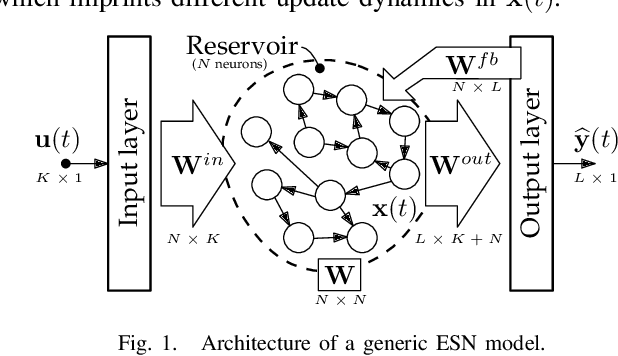
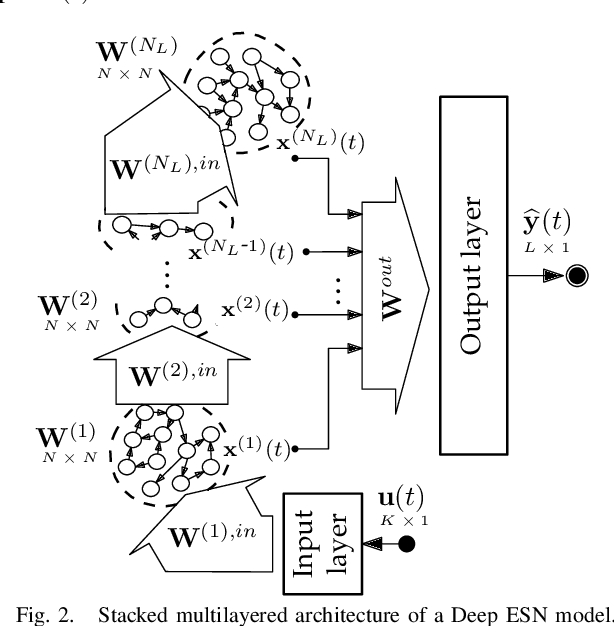

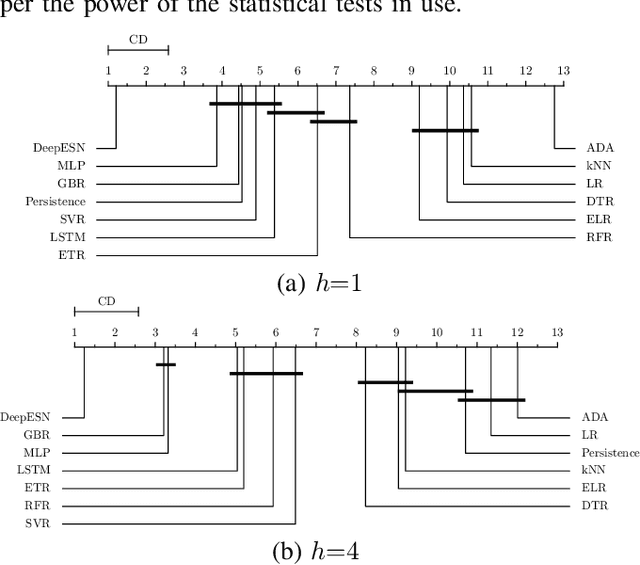
Abstract:In short-term traffic forecasting, the goal is to accurately predict future values of a traffic parameter of interest occurring shortly after the prediction is queried. The activity reported in this long-standing research field has been lately dominated by different Deep Learning approaches, yielding overly complex forecasting models that in general achieve accuracy gains of questionable practical utility. In this work we elaborate on the performance of Deep Echo State Networks for this particular task. The efficient learning algorithm and simpler parametric configuration of these alternative modeling approaches make them emerge as a competitive traffic forecasting method for real ITS applications deployed in devices and systems with stringently limited computational resources. An extensive comparison benchmark is designed with real traffic data captured over the city of Madrid (Spain), amounting to more than 130 automatic Traffic Readers (ATRs) and several shallow learning, ensembles and Deep Learning models. Results from this comparison benchmark and the analysis of the statistical significance of the reported performance gaps are decisive: Deep Echo State Networks achieve more accurate traffic forecasts than the rest of considered modeling counterparts.
Exploiting a Stimuli Encoding Scheme of Spiking Neural Networks for Stream Learning
Jul 23, 2019



Abstract:Stream data processing has gained progressive momentum with the arriving of new stream applications and big data scenarios. One of the most promising techniques in stream learning is the Spiking Neural Network, and some of them use an interesting population encoding scheme to transform the incoming stimuli into spikes. This study sheds lights on the key issue of this encoding scheme, the Gaussian receptive fields, and focuses on applying them as a pre-processing technique to any dataset in order to gain representativeness, and to boost the predictive performance of the stream learning methods. Experiments with synthetic and real data sets are presented, and lead to confirm that our approach can be applied successfully as a general pre-processing technique in many real cases.
jMetalPy: a Python Framework for Multi-Objective Optimization with Metaheuristics
Apr 17, 2019
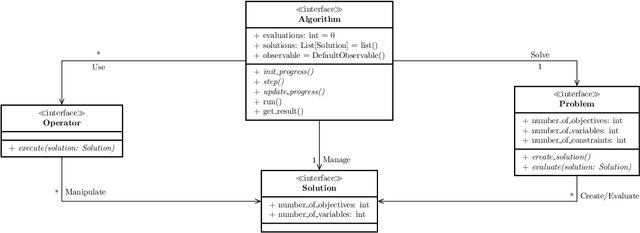
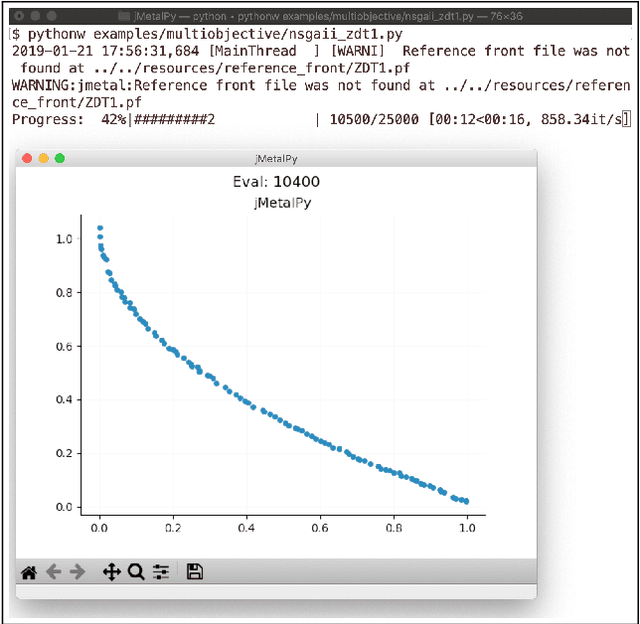
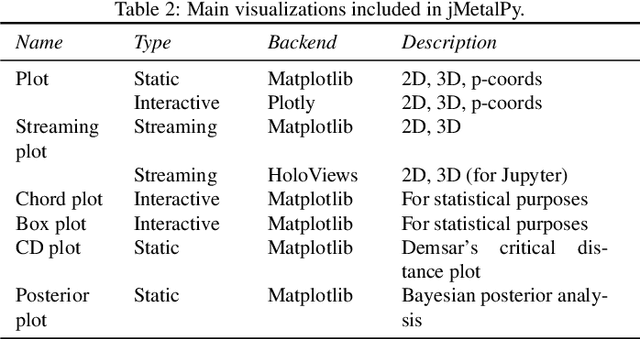
Abstract:This paper describes jMetalPy, an object-oriented Python-based framework for multi-objective optimization with metaheuristic techniques. Building upon our experiences with the well-known jMetal framework, we have developed a new multi-objective optimization software platform aiming not only at replicating the former one in a different programming language, but also at taking advantage of the full feature set of Python, including its facilities for fast prototyping and the large amount of available libraries for data processing, data analysis, data visualization, and high-performance computing. As a result, jMetalPy provides an environment for solving multi-objective optimization problems focused not only on traditional metaheuristics, but also on techniques supporting preference articulation and dynamic problems, along with a rich set of features related to the automatic generation of statistical data from the results generated, as well as the real-time and interactive visualization of the Pareto front approximations produced by the algorithms. jMetalPy offers additionally support for parallel computing in multicore and cluster systems. We include some use cases to explore the main features of jMetalPy and to illustrate how to work with it.
 Add to Chrome
Add to Chrome Add to Firefox
Add to Firefox Add to Edge
Add to Edge